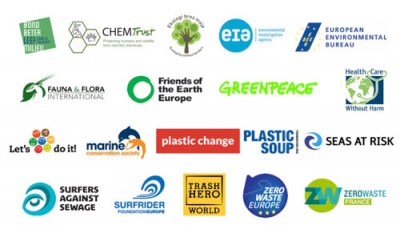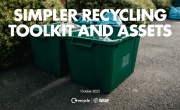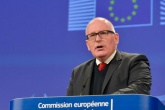Commission’s circular plastics plan doesn’t address biggest issues – NGOs
The European Commission’s (EC) roadmap for an EU strategy on plastics in the circular economy does not get to the root of the plastics problem, according to a coalition of environmental groups.
 The Break Free From Plastic movement is a partnership of 90 non-governmental organisations from around the world, and the coalition’s 20 members from Europe, including Greenpeace, Friends of the Earth Europe and Zero Waste Europe, have criticised the EC’s vision of a circular transition for plastics.
The Break Free From Plastic movement is a partnership of 90 non-governmental organisations from around the world, and the coalition’s 20 members from Europe, including Greenpeace, Friends of the Earth Europe and Zero Waste Europe, have criticised the EC’s vision of a circular transition for plastics.
The EC announced that it would be creating a strategy to create a more circular plastics industry this week and published a roadmap ahead of the strategy’s publication towards the end of 2017.
That roadmap stated that the three priority areas would be:
- decoupling plastics production from virgin fossil feedstock and reducing its life-cycle greenhouse gas impacts;
- improving the economics, quality and uptake of plastic recycling and reuse; and
- reducing plastic leakage into the environment, in particular the marine environment.
Commission response ‘won’t lead to meaningful adoption of circular principles’
According to Break Free From Plastic, however, these priorities do not get to the root of the plastic problem, with the group arguing that ‘to make a significant contribution to the circular economy, the roadmap needs to focus on reducing and optimising the use of plastics’.
A statement released by the coalition stated: ‘While the commission highlights the many problems of plastic pollution for the marine environment, the coalition regrets that it does not propose adequate measures to tackle the issue. What’s more, for packaging and its role in littering, the commission points at the lack of consumer awareness, rather than addressing the producer’s responsibility and the full range of confusion introduced by biodegradable plastics.
‘In addition, the commission does not expand on the need to move away from the use of hazardous chemicals in plastics which can harm public health.’

“It is crucial that we reframe the debate around real solutions, take action to dramatically reduce throwaway plastics and acknowledge producer responsibility for a product’s end of life in the design process, rather than focusing on (unsustainable) replacement and recycling.”
The need to take a different approach to plastic production and recovery has been made clear in the recent years as the amount of plastic entering the environment and its effect on ecosystems has been studied in greater depth.
A report published last year by the Ellen MacArthur Foundation (EMF) and McKinsey & Company stated that while plastics and plastic packaging are an integral part of the global economy and deliver many benefits, most of the material is only used once, with 95 per cent of the value of plastic packaging material, worth between US$80-120 billion (£60-95 billion) a year, being lost to the economy.
It also estimated that 32 per cent of plastic packaging escapes collection systems and made the now oft-repeated claim that by 2050 there could be more plastic in the world’s oceans than fish (by weight) if we do not reconfigure the plastic economy.
At the World Economic Forum last week, more than 40 organisations that have signed up to the EMF’s New Plastics Economy initiative backed a global action plan that aims to see 70 per cent of the world’s plastic packaging reused and recycled, compared to the current rate of around 14 per cent.
The EC roadmap for its Strategy on Plastics in a Circular Economy can be read on the European Commission’s website.









